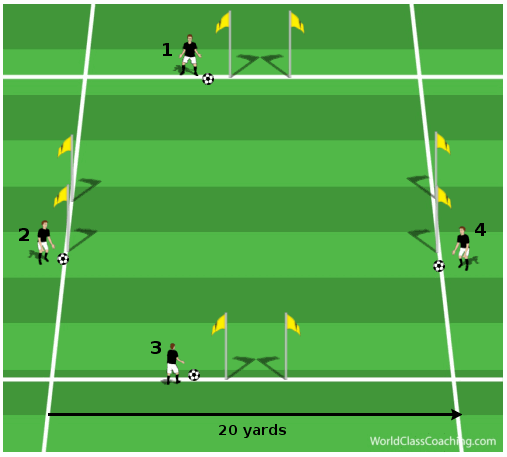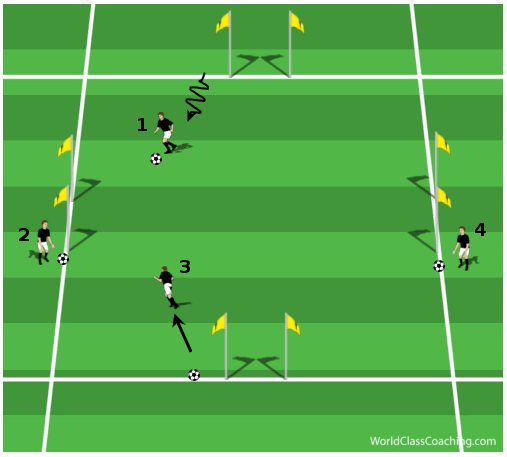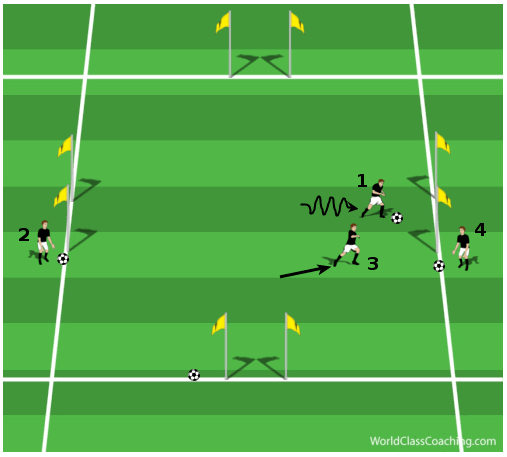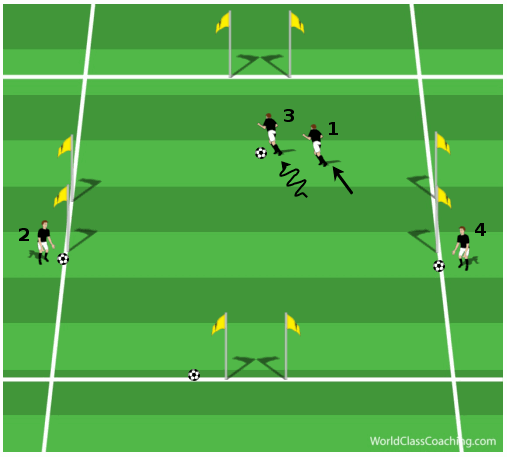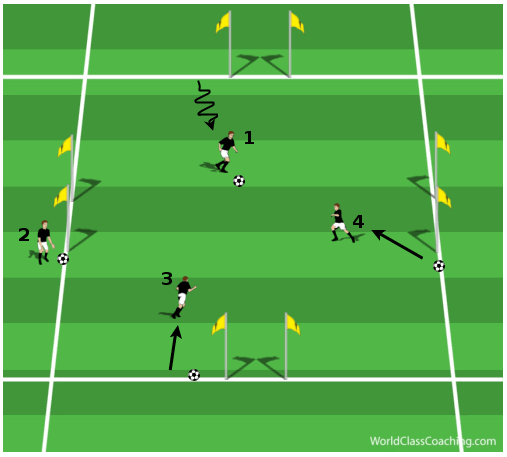By Justin Cresser
Today’s activity focuses on a number parameters, including individual and small group defending; 1 v 1 attacking; speed of reaction; and anaerobic endurance. It is an exercise I like to use during the competitive or in-season as it allows me to ‘kill many birds with one stone’.
Set-Up and Directions:
Divide your players into groups of 4 (or 8) and set up the following station for each group: Create a grid 20 yards wide and 20 yards long. Place a small goal (1.5 yards wide) on each side of the grid so that the goals are in line with the centre of the area. Have one player stand beside each goal with a ball at their feet. Give each player a different number between 1 and 4 (Figure 1).
When ready, the coach will call two numbers. The first number called will be the attacker and the second number called will be the defender. In the example shown, the coach has called number one and then number three. The attacking player (player 1) must dribble their ball into play and attempt to score by dribbling the ball through any of the two small goals where the other two players are standing (Figures 2 and 3).
If the defender (player-3) wins the ball, they score by dribbling the ball through the goal where the attacker was initially standing (Figure 4).
As soon as the play is finished, have the players return to their starting positions and then repeat the process. Continue this activity for 2 to 3 minutes and then have the players rest for 2 minutes. If you have two groups per station, have the second set of players go while the other set rests.
Note: You should vary the order in which you call the numbers, but ensure no player goes more than 2 repetitions in a row.
Coaching Points:
- All players must maintain a good ready position (low centre of gravity, slight forward lean) and react as quickly as possible after the numbers are called
- The attacker must keep the ball close to their feet and use a variety of turns and fakes as well as a change of speed in an attempt to beat the defender. Once they have gained space/beaten the defender, they must attack the open goal at speed.
- The defender must maintain a low centre of gravity and use good footwork in order to prevent the attacker from scoring. They should be no more than an arms-length away from the attacker. They must also resist jumping in, but tackle when appropriate
- The exercise also incorporates speed of reaction and decision making, as the players have to process and respond to the different numbers called and the order they were called in. They also have to remember what goals they can score in.
Progression:
You can progress this exercise by adding an additional defender. However, the attacking player is now allowed to score in any of the goals except the one where they were standing (Figure 5). If one of the two defenders win the ball, they can score by dribbling through any of the goals that is not their own.
A main coaching point for this progression is communication between the two defenders to make the play of the attacking player predictable. They must also decide (and do so quickly) who the pressuring defender is.
Best of Luck,
Justin.
Justin Cresser has coached soccer at various levels both in North America and abroad (Hong Kong and Africa). He is currently the Assistant Technical Director at the Soccer Club of Toronto. He has his Advanced National Diploma from the NSCAA and is also a certified strength and conditioning coach.

